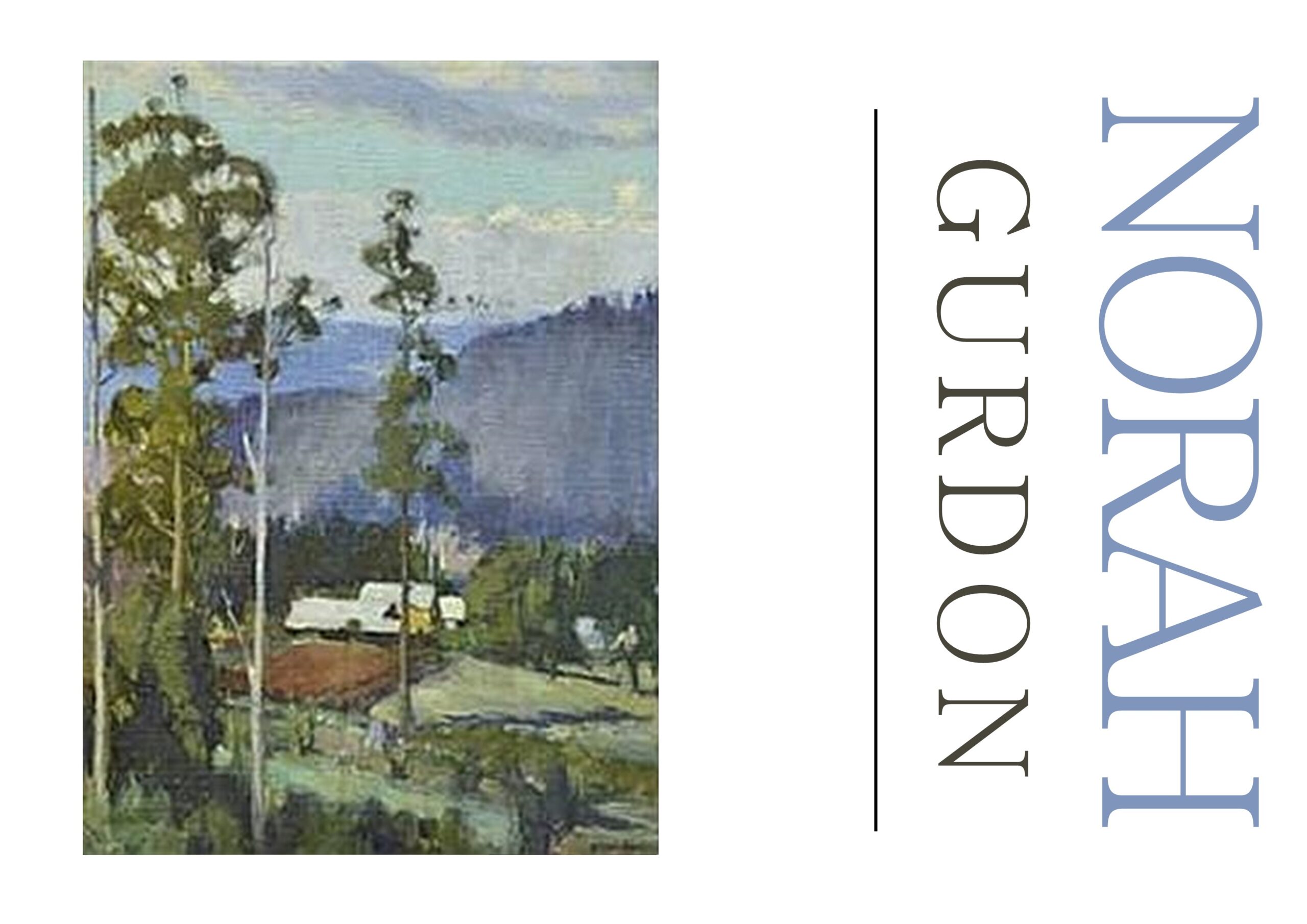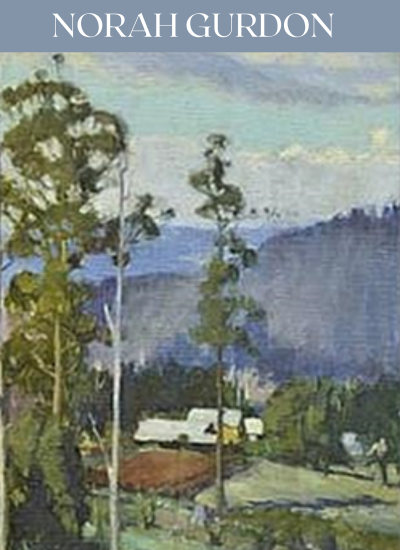Norah Gurdon
Research toward catalogue raisonne – free download below

Norah Gurdon was born in Thetford, England in early 1882, the second child of Edwin John Gurdon (Doctor) and his wife Ellen Anne Randall. She and her two siblings, Edwin b. 1881 and Winifred (b.1884) followed their father to Australia on board the Carlisle Castle in 1886 in the company of a nurse. By the time of their arrival, Dr Gurdon had set up a practice for himself in Ballarat, but almost immediately transferred to Learmonth, before settling in Brighton in 1889. It was here that the youngest surviving Gurdon sibling, Brampton, was born in May of the same year.
The family enjoyed a privileged life in Brighton and were members of the congregation of the local St Andrew’s Church. Gurdon and her sister received instruction in all the accomplishments desirable of a well breed young lady of the period and for a time attended Brighton High School for girls, where she excelled in needlework. But plagued by a decade of professional mishaps and incidences that kept his name regularly in the press for all the wrong reasons, Dr Gurdon made the decision to sell his estate and move his practice to the rural New South Wales town of Condobolin, in 1899, leaving his wife and 4 children behind.
In 1901, Gurdon registered as a student at the National Gallery Art School with friends Janet Cumbrae Stewart and Jessie Traill, where she studied drawing under Frederick McCubbin until 1903 when she was awarded second prize at the annual school exhibition for drawing from antique. In 1904, Gurdon progressed to the School of Painting where she was to continue her studies under Bernard Hall, though he was away in England for much of the time during which his student’s were left in the capable hands of their old drawing master. McCubbin’s influence can be seen in her love of the Australian landscape and her impressionistic handling. In the painting room, students progressed to drawing life subjects and in 1904, Gurdon received 3rd prize for Drawing a head from life at the school’s annual exhibition….. Download the catalogue below for the full history.
